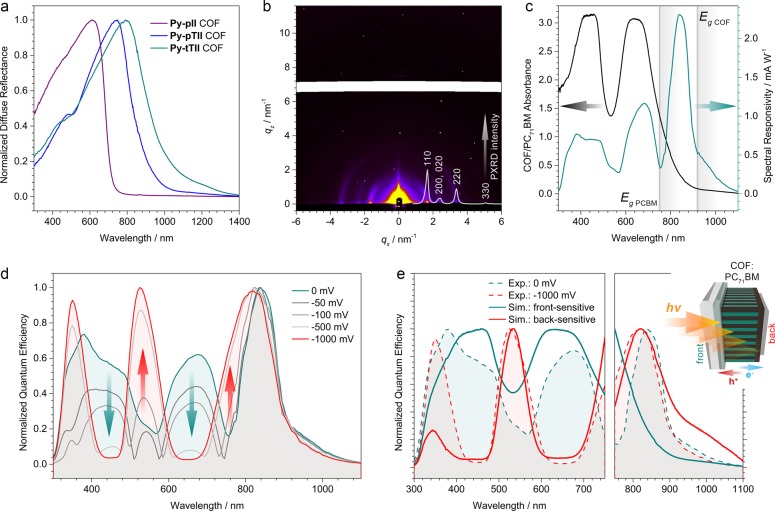Figure 4.
(a) UV–vis-NIR diffuse reflectance spectra of the Py-pII, Py-pTII, and Py-tTII COF powders dispersed in BaSO4. (b) GISAXS pattern of a Py-tTII COF film grown on ITO/MoOx indicating a predominant orientation of the COF domains with their a−b plane parallel to the substrate. Inset, the simulated Py-tTII COF PXRD pattern. The reflections observed in the GISAXS pattern correspond to the 110, 020 and 200, 220, and 330 sets of lattice planes. (c) Spectral responsivity of the Py-tTII COF-based photodetector without external voltage bias (green) and the transmission absorbance of the COF:PC71BM active layer (black). Gray lines indicate the optical band gaps of PC71BM and the COF. (d) Upon application of an external voltage to the photodetector, the quantum efficiency in the green and NIR regions up to 750 nm is greatly enhanced. This is accompanied by a reduced sensitivity to blue and red light, eventually leading to an inversion of the sensitivity profile across the visible spectrum at 1000 mV reverse bias. (e) A qualitative description of these characteristics can be derived from modeling the spectral distributions of collected charge carriers. While without voltage bias the device responds mostly to photons absorbed close to the front electrode (green line), the photoresponse at −1000 mV indicates a predominant sensitivity toward photons that penetrate deep into the active layer and are absorbed close to the back electrode (red line). Inset, illustration of the photodetector device layout.

